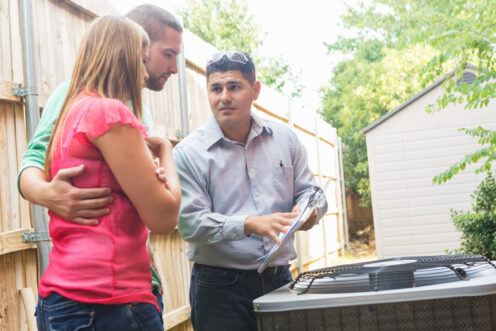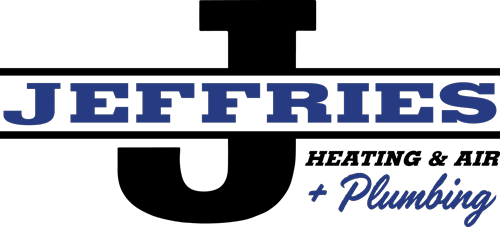What Heating Emergencies Are and How to Avoid Them

In winter, nighttime temperatures in Somerset, KY routinely dip well below freezing. Without a functional heater, the temperature inside your home could be just as low as the temperature outdoors. Thus, as autumn trundles off with its profusion of multi-colored leaves and crisp, cool winds, it’s important to ensure that your furnace, heat pump, or boiler is ready for what lies ahead. Anytime that your heating equipment is out of commission for hours or days at a time, this constitutes a heating emergency. Read on to find out what heating emergencies are, how these events harm people and properties, and how to avoid them.
The Problem with Fast-Plummeting Temperatures Indoors
Having a dependable heating system is not only important for staying comfortable this winter, but it also makes your home safer. Setting up a portable heater for short-term use will only keep a single room warm, and it will only do so if this room is sealed off. This is also true of fireplaces, wood-burning stoves, and other temporary alternatives to permanent heating equipment. When the outside temperature is below freezing, all these things will have a hard time providing sufficient warmth for the people who are huddled around them.
Using portable heaters, fireplaces, and wood-burning stoves also creates several health and safety hazards. Portable heaters can tip over, short-circuit, or ignite nearby furnishings, rugs, or linens. Stoves, fireplaces, and other fuel-burning appliances require careful venting. If they aren’t correctly vented outdoors or if they’re used in sealed and poorly ventilated environments for too long, the risk of carbon monoxide (CO) poisoning rises. Thus, even when these alternative heat sources exist, homes that lack functional, fixed heating equipment are still experiencing heating emergencies. Until their heaters are repaired or replaced, they won’t have safe, reliable measures for keeping everyone warm.
Cold Indoor Temperatures and Your Plumbing
Heating emergencies aren’t just a threat to people. If left unchecked for too long, icy temperatures inside your home could cause your pipes to freeze. The water that’s trapped within them will gradually expand and may lead to cracks or outright ruptures. While it might cost hundreds of dollars to resolve a furnace, boiler, or heat pump problem, the cost of replacing ruptured pipes and other damaged plumbing features can easily reach the thousands.
Cold Temperatures and Water Heater Ruptures
When the water supply pipe leading to a water heater freezes, ruptures, or experiences other temperature-related damage, the water heater itself is at risk of bursting. The dramatic expansion and contraction that occurs when a water heater is subjected to extreme temperature changes can cause cracks to form in its glass liner and exacerbate sediment-related wear at its tank base. Thus, not only will you have to deal with a cold, uncomfortable building interior, but you might additionally contend with the loss of hot water and a sudden and unmanageable flood.
Resident Health During Heating Emergencies
It’s probably difficult to imagine the interior of your home as being so cold that everyone can see their breath when speaking. However, without a functional heater, your living space could become downright freezing within just an hour or less. Any warmth that it retains just after your furnace breaks down will be lost to cracks and gaps in building materials, ill-fitted windows and doors, and other air leaks. Despite everyone’s best efforts to bundle up and huddle together, some residents might develop hypothermia, frostnip, or even frostbite. Aging adults, residents with compromised immune systems, and infants and toddlers are among the most vulnerable.
The Best Way to Avoid Heating Emergencies in Your Somerset Home
There are two easy ways to avoid heating emergencies this winter and every winter that follows. The first is to practice diligent HVAC system maintenance. The second is knowing when to replace your heating equipment and taking care of essential replacements before your heating system reaches the end of its service life.
All furnaces require annual maintenance from a licensed HVAC company. This service keeps heaters compliant with the terms of their manufacturer warranties. It also allows HVAC technicians to identify small and developing problems and resolve them early on. During these visits, HVAC technicians replace worn, damaged, and missing parts, test all safety features, calibrate thermostats, and more. Not only do these tune-ups minimize the risk of furnace malfunction, but they also allow for more efficient performance and improved indoor air quality (IAQ).
Most residential heating systems have expected lifespans of 15 to 20 years. Having a trusted HVAC company monitor the age and performance of your heating equipment will help you budget and plan for replacement so that you’re caught off-guard by age-related failure.
We’re proud to serve Somerset, KY and the surrounding areas. You can count on us for first-rate heating, cooling, plumbing, and electrical services. We also provide air duct cleaning, indoor air quality services, and preventative maintenance agreements. To sign up for our HVAC preventative maintenance plan or to schedule an appointment, contact Jeffries Heating & Air + Plumbing now.
